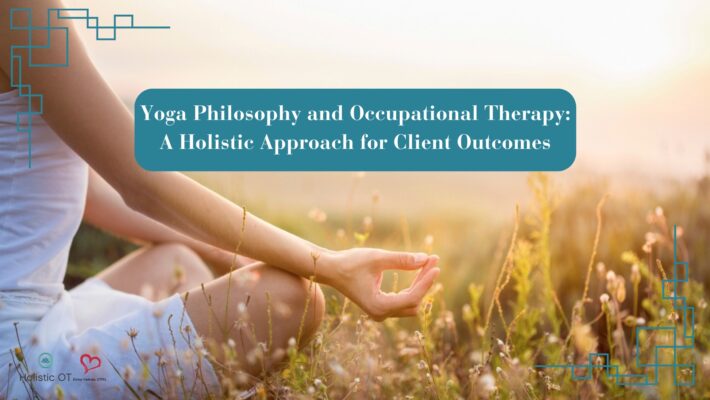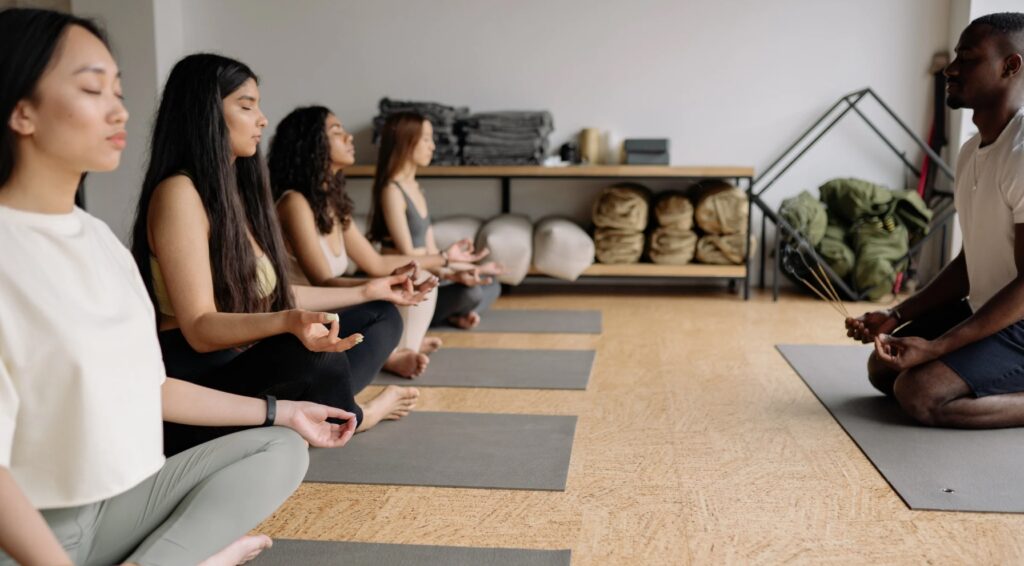
How Yoga Improves Occupational Therapy Practice
Occupational therapy (OT) provides a holistic approach that helps people engage in meaningful activities and experiences. It supports the function and interplay of the mind-body-spirit. There are many methods that OTs provide to support people across the lifespan. Yoga is one that is becoming more popular and is a type of integrative health, formerly known as alternative medicine.
- The Whole Person – Both OT and yoga philosophy emphasize addressing the whole person—body, mind, and spirit—rather than just symptoms or conditions.
- Balance – The balance promoted in yoga philosophy aligns with OT’s goals of achieving optimizing function and equilibrium between self-care, work, and play/leisure.
- Self-empowerment – Yoga philosophy emphasizes self-awareness and self-mastery, akin to OT’s focus on empowering individuals to achieve independence, interdependence, joy, and resilience.
“The word yoga is derived from the Sansrkit root ‘yuj’ meaning to bind, join, attach and yoke, to direct and concentrate one’s attention on, to use and apply. It also means a union or communion. It is the true union of our will with the will of God… it means the disciplining of the intellect, the mind, the emotions, the will, which that yoga presupposes; it means a poise of the soul which enables one to look at life in all its aspects evenly.” –B. K. S. Iyengar, from The Light on Yoga
Yoga has been practiced for thousands of years, and recently has shown several benefits for maintaining health, wellness, and prevention of illness and disease, according to research studies and personal experiences. Yoga may be practiced as form of a healthy lifestyle, and it has been integrated into therapy sessions to help people recover from physical and mental illness and disease.
When people think of yoga, they may be familiar with the asanas or postures that are practiced on a mat as a physical movement or static position for exercise. While that has its own benefits, there is more to yoga. There is a whole philosophy, in fact.
The philosophy of yoga, particularly the eight limbs of yoga as outlined in the Yoga Sutras of Patanjali, aligns well with the principles and practices of OT.

The eight limbs or Astanga of yoga:
- Yamas (Ethical Disciplines)
- Niyamas (Personal Disciplines)
- Asana (Physical Postures)
- Pranayama (Breath Control and Soul)
- Pratyahara (Withdrawal of Senses)
- Dharana (Concentration)
- Dhyana (Meditation)
- Samadhi (State of Bliss or Restful Awareness)

Yoga can be combined into occupational therapy practice to provide a holistic framework that can enhance both client outcomes and practitioner well-being. The eight limbs can be a guide to living the best life.
Within the eight limbs of yoga, there is meditation, breath work, and ethical practices to support clients’ physical, emotional, and spiritual well-being. These can also be incorporated into a healthy lifestyle for the OT practitioner, fostering the practitioner’s self-care and resilience, as well as for the client. By bridging ancient wisdom with modern therapeutic approaches, OTs can empower clients toward beneficial outcomes that enhance occupational performance, and more enriching, meaningful, and purposeful lives.
Join Emmy Vadnais, OTR/L for the Yoga Philosophy and Occupational Therapy: A Holistic Approach for Client Outcome continuing education class on February 22, 2025. Emmy has been practicing yoga for 20 years and regularly incorporates it into her intuitive coaching, health care practice, and classes.





Leave a Reply